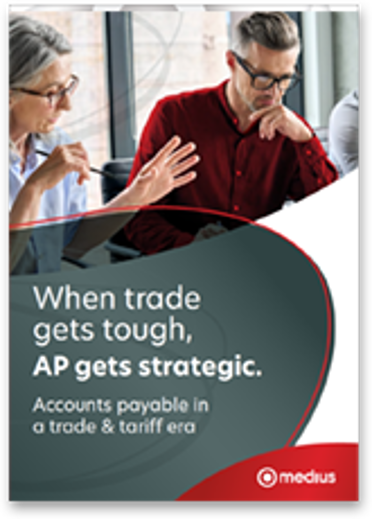

What are tariffs?
A tariff is a tax imposed by a government on goods imported into a country. Tariffs increase the cost of imported goods, making them less competitive than domestic products. Governments use tariffs to:
- Raise revenue
- Protect domestic industries
- Retaliate against unfair trade practices
- Leverage negotiations in international trade disputes
What is trade policy?
Trade policy is a country’s overall strategy to regulate international trade. It governs how goods, services, and capital move across borders and includes various tools beyond just tariffs.
- Tariffs – Taxes on imported goods
- Quotas – Limits on how much of a product can be imported
- Subsidies – Government support to domestic producers
- Export restrictions – Bans or licenses required for exports
- Free trade agreements (FTAs) – Pacts like USMCA or EU trade deal
Tariffs vs. trade policy: What’s the difference?
Tariffs and trade policy are closely linked, but not the same.
Trade policy is the umbrella strategy that shapes how a country engages in international commerce.
A tariff is one specific tool within that broader policy—a direct tax on imported goods.
| Concept | Description |
|---|---|
| Trade policy | A nation’s full approach to trade, including laws, treaties, tariffs, and incentives |
| Tariff | A tax on imported goods used to support trade policy goals |
Bottom line: All tariffs are part of trade policy, but not all trade policy involves tariffs.
Why do governments impose tariffs?
Governments use tariffs for several strategic and economic reasons:
Revenue generation
Tariffs bring income to the government.
Protect domestic industries
Tariffs encourage consumers to buy locally by making imported goods more expensive.
Political or economic leverage
Tariffs are often used in trade negotiations or as retaliation during disputes.


How do tariffs and trade policy affect accounts payable?
Tariffs hit the bottom line quickly, but finance teams often can’t see the full picture right away.
Because tariffs are typically managed by customs brokers and rarely appear directly on supplier invoices, traditional ERPs may not capture them in real time. This puts added pressure on accounts payable (AP) teams, who must scramble to:
- Understand cost increases
- Trace invoice discrepancies
- Track cash flow impacts tied to duties and tariffs
Navigating tariffs and regulatory changes starts with the right data.
Traditional ERP systems lack clear insights into tariff impacts since customs brokers often handle tariffs and are not shown on supplier invoices. This slows data analysis, making it harder for finance teams to address rising costs efficiently and supplier risks effectively.


What is landed cost?
Landed cost refers to the total price of a product once it arrives at the buyer’s door. It includes:
- Base product cost
- Freight and shipping fees
- Insurance
- Customs duties and tariffs
- Handling or brokerage fees
Understanding landed cost helps AP and procurement teams:
Accurately compare suppliers
Avoid surprises in payment reconciliation
Negotiate smarter contracts
How AP automation helps navigate tariffs and trade changes
Modern AP automation platforms help finance and procurement teams gain visibility and control in a volatile trade environment. Here’s how:
Better data for smarter decisions
- Aggregate and analyze total landed costs, including tariffs and duties
- Spot patterns in supplier pricing, risk, and exposure by region
Strategic sourcing & cost avoidance
- Identify and prioritize suppliers in low-tariff regions
- Use accurate landed cost data to negotiate better contract terms
Optimized payments & cash flow
- Extend or adjust payment terms to balance out high upfront costs
- Prioritize payments based on full landed cost, not just invoice date
- Time payments to align with customs clearance and duty deadlines
Procurement alignment & compliance
- Collaborate with trade and legal teams to ensure accurate HTS (Harmonized Tariff Schedule) classifications
- Reinforce procurement controls to reduce rogue or high-cost sourcing
Smarter expense management
- Offset supply chain pressures by trimming discretionary spend (e.g., travel, entertainment)
- Monitor and manage employee expenses in real time with platforms
Learn how AP can be your secret weapon when tariff and trade shifts happen quickly.
AP in a trade and tariff era.
FAQs about tariffs
and trade policy
Tariffs can protect local industries by making foreign goods more expensive. However, tariffs can drive up material and production costs for businesses that depend on global supply chains, squeezing their profit margins.
Tariffs might technically be charged to importers, but the costs usually get passed down to businesses and consumers through higher prices.
Retaliation can harm exporters, make it harder to compete overseas, and spark a trade war that drives up costs for everyone involved.
In some cases, yes—by reclassifying goods under different HTS codes, shifting suppliers to tariff-free countries, or reengineering products to avoid specific import categories.
Glossary of related terms
| Term | Definition |
|---|---|
| HTS Code | Harmonized Tariff Schedule code—used to classify imported goods for duty rates |
| Retaliatory tariff | A tariff imposed in response to another country’s trade restrictions |
| Dumping | Selling products below cost to undercut local markets, often triggering tariffs |
| Free trade agreement | A pact between nations to reduce trade barriers, such as tariffs |
| Trade deficit | When a country imports more than it exports, it often influences trade policy |
How AP teams can help
Tariffs are not just a trade team issue—they’re a finance problem. When duties hit margins and cash flow, AP needs tools to respond fast.
With automation, your AP team can:
See costs in real time
Predict tariff impacts
Adapt sourcing and payment strategies
Protect profit without sacrificing agility

Ready to take control of trade disruptions?

